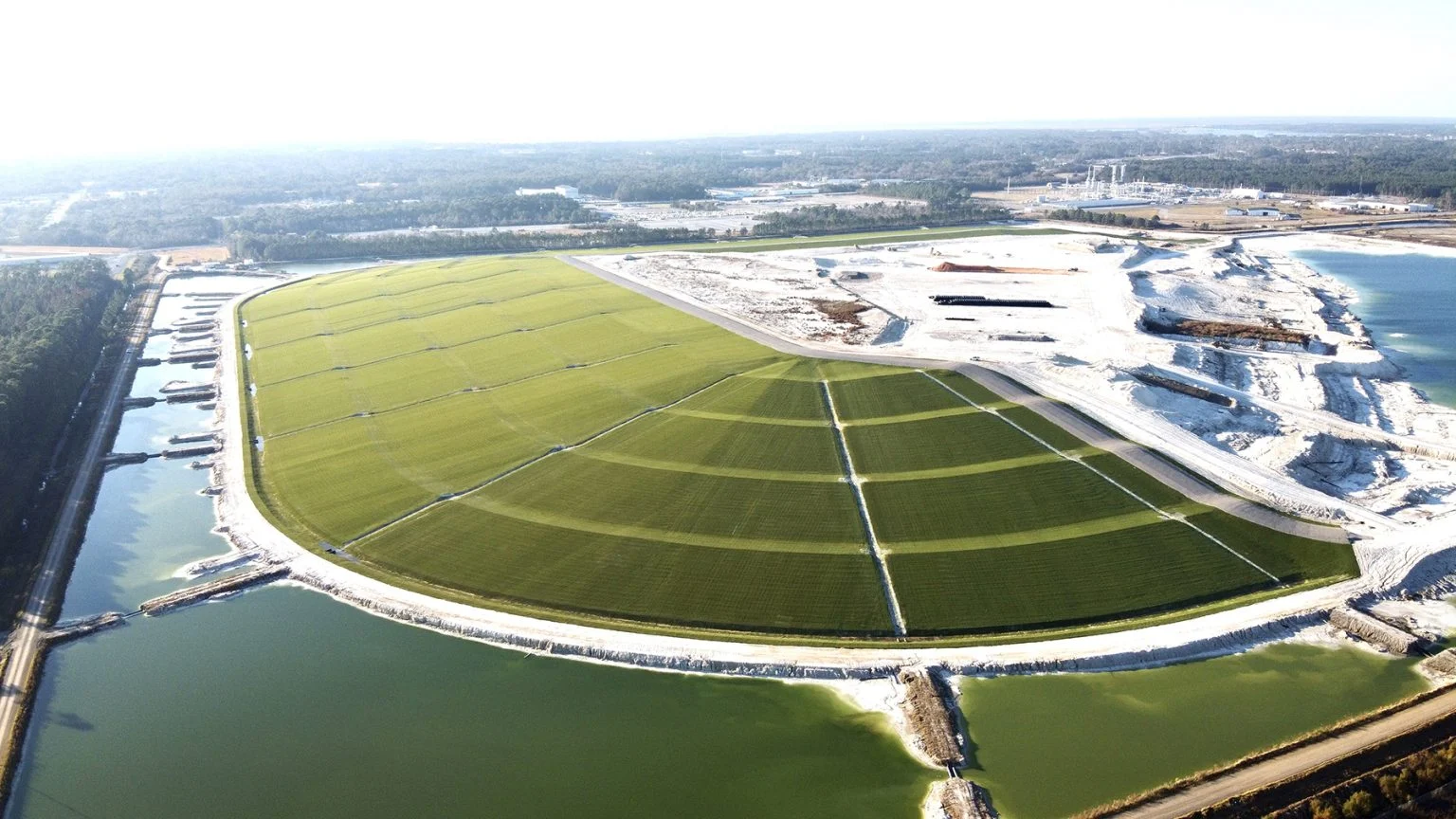Mississippi Phosphates, a former diammonium phosphate fertilizer plant in Pascagoula, MS, ceased operations in December 2014 following bankruptcy, leaving more than 700,000,000 gallons of acidic, nutrient-rich wastewater behind. Because of environmental impacts to the community, the EPA, who inherited the site in 2017, was on a mission to close the deemed superfund site as quickly as possible.
Landfill closures occur every year across the country. Many existing state sites are reaching capacity and are requiring final capping while also looking for areas to expand capacity. Technology has advanced final cover options with the latest being an engineered turf system that is showing wide acceptance and in-ground, long-term performance. So much so, that it caught the attention of the Environmental Protection Agency (EPA) when looking to close a massive Superfund site in Mississippi.
According to a published EPA fact sheet, wastewater from the site- if improperly discharged- could be toxic to fish and other forms of marine life and can cause algal blooms. Previous releases of untreated wastewater from the site (before EPA took over wastewater treatment) resulted in fish kills. Approximately 2-4 (million) gallons of wastewater were being treated per day, at a cost of $1 million per month ($23.4 million to date). In April 2018, EPA announced the $71.6 million cleanup that would take place through 2020, plus $36 million for ongoing wastewater treatment during cleanup.
Cleanup construction began in 2018 and focused on the closure of the East Gypsum Stack and the North Ponds at the West Gypsum Stock over three phases (each lasting about a year). The cleanup was set to eliminate the storage of more than 500 million gallons of contaminated wastewater and reduce the volume of wastewater requiring treatment by an estimated 98 percent.
The EPA considered multiple closure options with the goal of providing the most environmentally sound and economical solution for U.S. taxpayers. After thorough review by the EPA and their outside consultants, the solution selected was an innovative approach that has been used on other solid and hazardous waste sites throughout North America (shown below).
In June 2020, phase one of the first three phases of the project was completed with a unique closure technology called ClosureTurf®. The engineered synthetic turf took half as long to install than a traditional vegetative cover. This was especially important because for every inch of rainfall, there were about 9 million gallons of treatment required for the entire landfill. Closing faster meant reducing potential risks and saving more taxpayer money. Closure of Phase 1A and 1B of the project is already eliminating rainwater contact on 100 acres, thus greatly reducing water treatment costs for that area.

On June 7, 2020, just days after completion of Phase One, the Mississippi Phosphates’ site was hit with its first major storm event, Tropical Storm Cristobal. It brought high winds and around 11 inches of rain to Pascagoula. At peak intensity, it reached over 3 inches/hour. The site experienced no damage or erosion after the storm event with ClosureTurf.
It also reduced about 14 million gallons of water treatment (approximately $146,000) for just that one event. The impressive performance under events like these has led the EPA to look at using ClosureTurf on multiple future closures.


The second phase of the Mississippi Phosphates project, which included closure of the EGS Pond 5 and 6, was just completed in December 2020. The entire project, including phase three scheduled to begin early next year, will eliminate a carbon footprint of 139,000 truck trips, avoid stripping over one million cubic yards of soil from neighboring land and save an overall $6 million dollars in installation and operation costs. Because of the performance of ClosureTurf to date, the EPA has recently made the decision to close an additional 130 acres with ClosureTurf previously designed to close with traditional vegetation.
With over 2,500 acres in place, the engineered synthetic turf and structured membrane composite final cover system is quickly becoming a viable and standard option all across the country. Because of its benefits, it is being used in the waste industry from the smallest of MSW sites to large hundred-acre industrial and utility sites. Previously an environmental liability for the EPA that threatened one of the most biological productive estuaries in the region is now being safely closed with a predictable, community-friendly solution that will last for years to come. Because of the EPA’s acceptance, more and more states are following suit.


